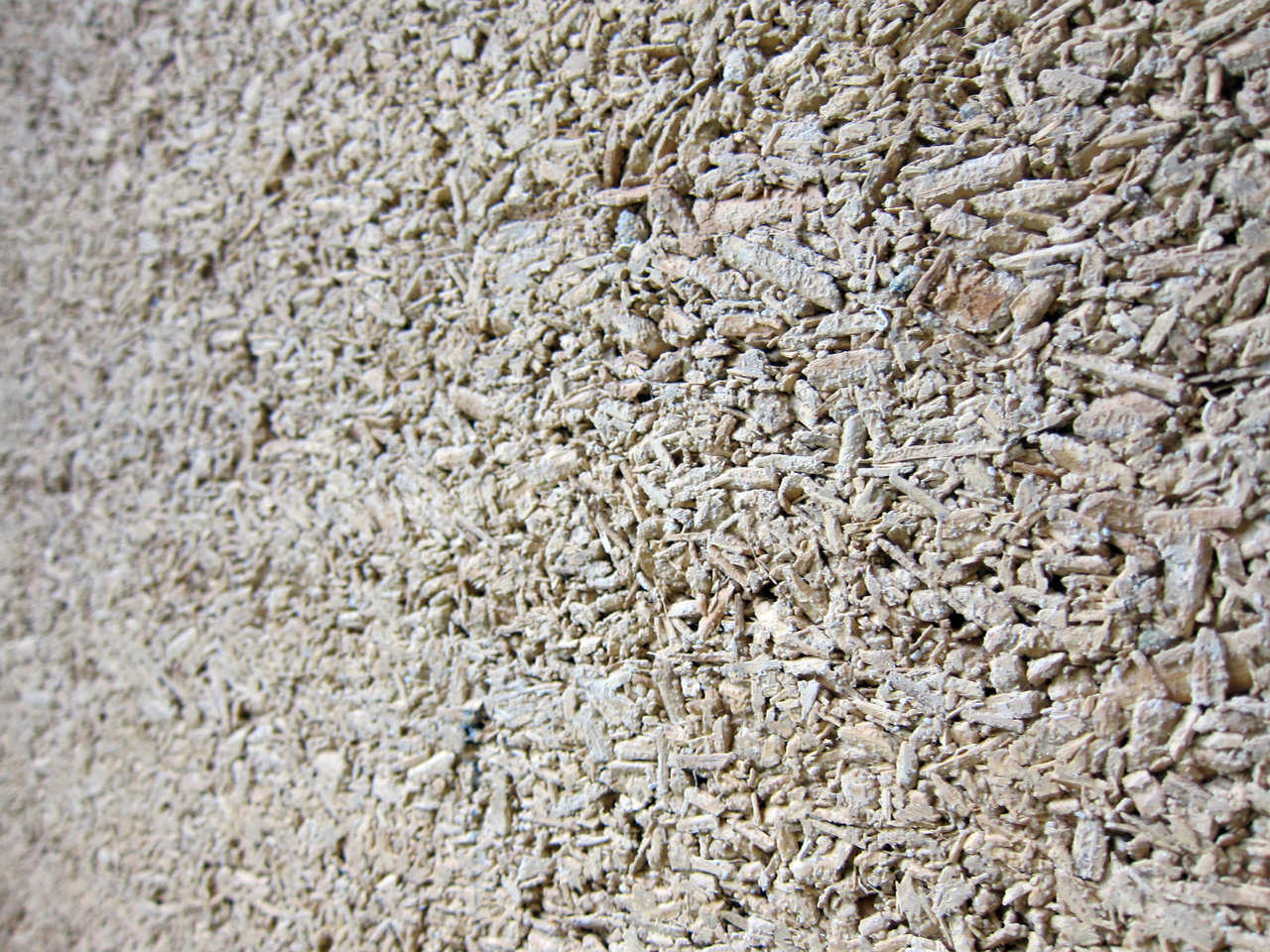
Hemp fibers embedded in lime (usually cement) binders forms hempcrete. (Flickr/Jznl)
Hempcrete and the Monolithic Dome
We regularly receive emails asking about using hempcrete in the Monolithic Dome or EcoShell. Hempcrete uses natural hemp fibers embedded in a lime binder — usually cement. It can provide some insulation and a little strength, but if used in a Monolithic Dome it actually weakens the dome and reduces its energy efficiency.
It isn’t that strong
Hempcrete is 1/20th as strong as standard residential concrete. Sure, plain concrete with hemp fibers might have a slight increase in tensile strength than concrete alone, but compared to steel reinforced concrete, there’s no contest.
What about just using hemp fibers for all reinforcement? It will be a disaster. We learned from hard experience that even steel fiber reinforcement will lead to building failures. Hemp isn’t nearly strong enough to handle the reinforcement requirements for a building people are expected to live in. Never use fibers — of any kind — as sole reinforcement for load bearing concrete. It can kill someone.
It doesn’t help with energy efficiency
Hemp in concrete allows less thermal transfer than plain concrete. This has to be a good thing, right? For a Monolithic Dome, no, it isn’t. Monolithic Dome energy efficiency comes from two materials working together — polyurethane foam and concrete.
Polyurethane foam — the world’s greatest insulation — prevents 90 percent of thermal transfer. Impressive, but not enough.
The concrete is a thermal battery. The heat capacity of the concrete absorbs interior energy all day and gives it off all night. Like the flywheel in a car, it smooths out the day/night energy cycle. The Monolithic Dome depends on concrete mass to maximize energy efficiency.
Mixing in hemp fibers reduces the mass of the concrete, therefore, hemp reduces its thermal capacity. This lowers the energy efficiency of the Monolithic Dome.
What about an uninsulated EcoShell? It may seem counter-intuitive, but reducing the concrete mass lowers its energy efficiency even though hemp fibers can reduce thermal transfer. The EcoShell heats up in the day and cools at night. The larger the mass, the more it can absorb in the day, and then give off that energy at night. It’s way better to keep the shell mass high and then add an insulating coating to the exterior. White paint, grass thatch —anything that cuts sunlight on the concrete — will be far more beneficial than hemp fibers embedded in the concrete.
It reduces the lifespan
Hemp is not as strong nor will it last as long. Yes, steel can rust, but properly embedded in concrete will last for centuries. Hemp is an organic fiber and will decompose. It’s not a question of if, it’s a question of when. Even in the worst circumstances for steel and the best for hemp, the steel will last much longer. Failure of reinforcement is the failure of the building.
Properly built with steel and concrete a Monolithic Dome will last centuries. With hemp, it might only be decades. We want the concrete to be as rock-like as possible. Organic materials will only weaken the concrete in the long-term.
It isn’t as green
Another argument for hempcrete is one of carbon sequestration. When hemp grows it removes carbon dioxide from the air and gives off oxygen. Taking harvested hemp (with all its carbon) and storing it in concrete will lock away that carbon. This is supposed to be a negative-carbon footprint and a green building product. Okay, that’s great.
The green triangle — reduce, reuse, and recycle — puts reduce first and for good reason. The Monolithic Dome doesn’t use trees (which are left alive to continue converting carbon-dioxide into oxygen) plus the dome’s longevity means reducing the need to construct more buildings in the first place. The likely long-term use of a dome will change over time with the insides being remodeled to suit changing needs. This re-use rather than tearing down a building to build something new further improves the Monolithic Dome’s environmental impact.
Using hemp in the dome construction lowers the life of the dome and — in the long run — will not be as green.
Hemp is harder to spray
Hemp is more difficult to mix and certainly more difficult to spray. The huge amount of hemp fibers needed really plugs up the shotcrete spray gun.
There’s a lot of hype
Searching the web for “hempcrete” returns a lot of positive — even effusive — results. I think this is because the housing market, steeped in cutting up wood to make a house, is ripe for innovation. A hempcrete house is likely a vast improvement over plain particle board. However, just because it’s new and there is a lot of hype doesn’t mean it’s best for every application.
In reality, the Monolithic Dome is just a bigger leap in technology than hempcrete.